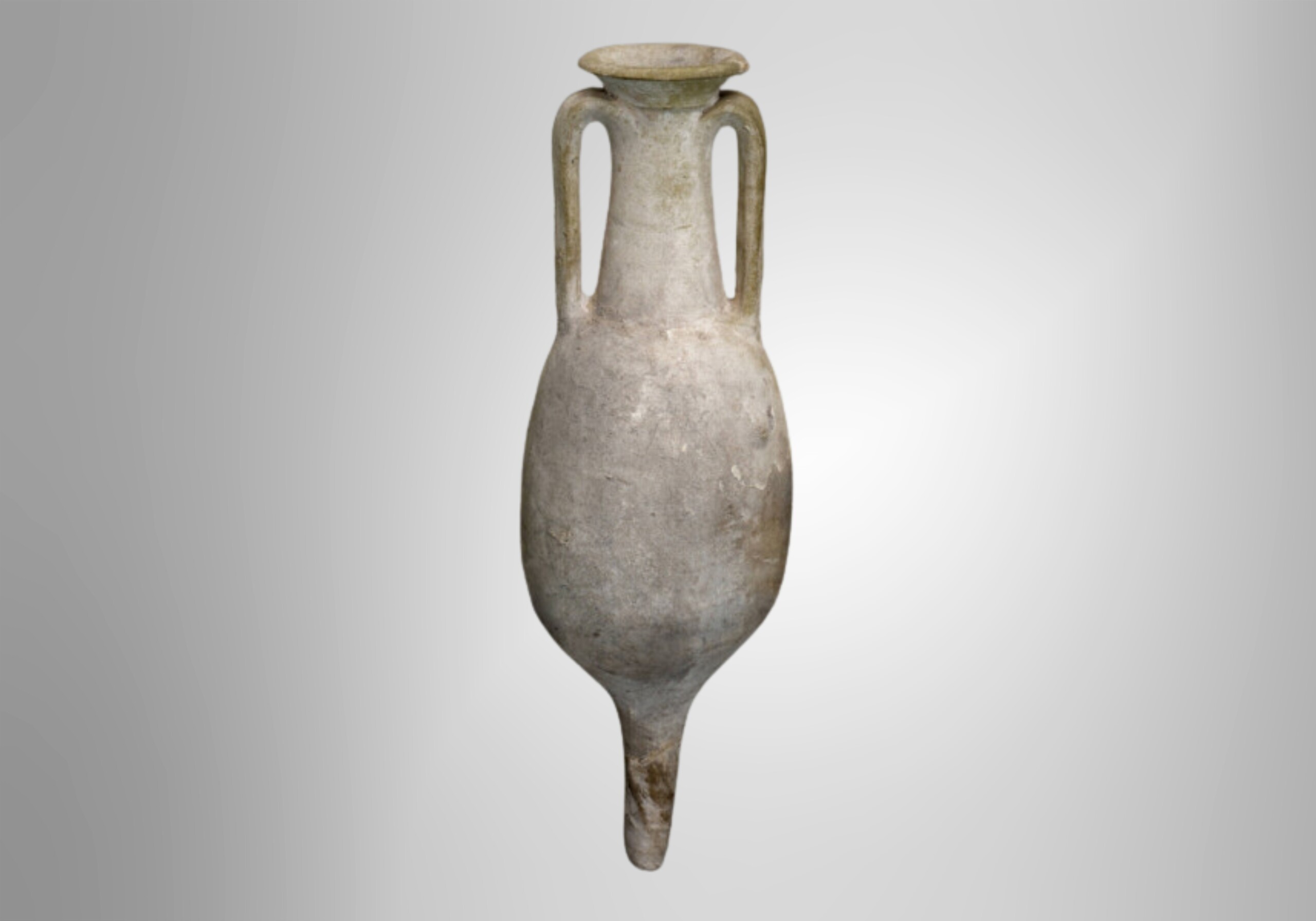
in 中文-普通话 / 國語 / Mandarin Chinese (traditional) translated by Fion
This object has been translated into 9 different languages by 8 different users
這個羅馬雙耳瓶已有將近2000 年的歷史。它最初發現於西班牙的加的斯,並被帶回博物館作為此類儲物容器的示例。瓶的底部呈尖頭形狀,使瓶子在堆疊時可以牢固地靠在一起。博物館曾將它與在曼徹斯特所發掘的碎片進行比較,它們都是由粘土製成,容易使用和處理。
哪些東西是你用過後會掉棄的或是會重複使用的?
Do you have something you’d like to say, in your own language or English, about the object or translation? We’d like to hear what you think.
Translations are community-sourced and for anyone to participate in, however you use your language. For more information, see Community Guidelines.
27 Jun, 2023
Notes on culture
In Rome, there is a port on the river Tiber called Emporio. This port has been used since ancient Roman times and it was particularly useful to receive goods and materials that arrived by sea from the port of Ostia and sailed up the Tiber.
Over the centuries the amphora shards, which were used to hold grain and liquid foodstuffs during transport, accumulated in a mound. This mound became so substantial in size to be awarded the name “Monte dei cocci” (“Mound of shards”).
Today, this mound is commonly known as Monte Testaccio. It is surprising for tourists and Romans to know that the famous Testaccio in fact an artificial hill formed by shards and various debris.
Nowadays, Testaccio is one of the most popular neighbourhoods in Rome. It is one of the cultural centres of the Eternal city but, throughout the centuries, it always managed to maintain its genuine and familiar spirit as Rome’s working-class district.
20 Nov, 2025
I would like to visit Testaccio to buy pizza Ebraica from a famous kosher cake shop called Boccione.